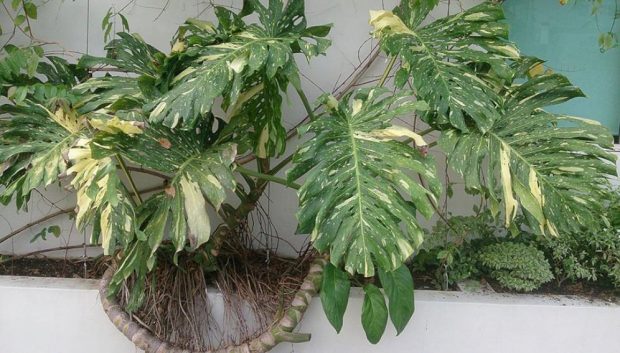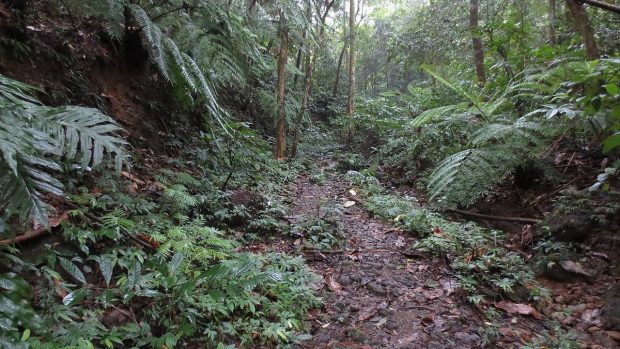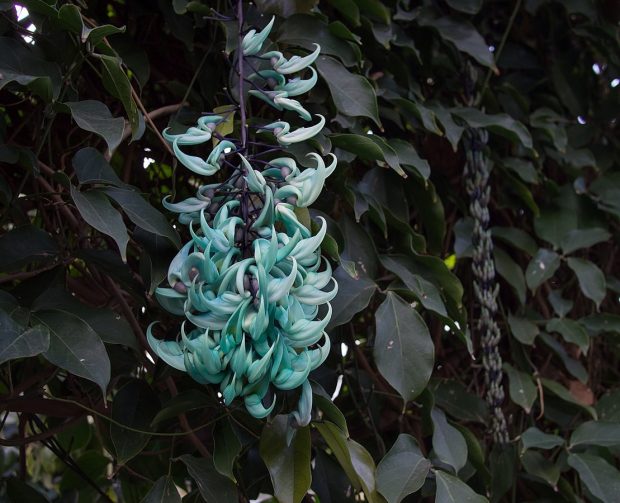
Poachers endanger South-East Asia’s rich biodiversity

By Crispin Maslog
LOS BAÑOS: Most days, except when it rains, I take regular one-hour walks along the lower end of the 4,244-hectare sloping campus of the College of Forestry, University of the Philippines Los Baños. The campus is at the heart of the Makiling Forest Reserve, which is a world centre for plant biodiversity.
Most days, except when it rains, I take regular one-hour walks along the lower end of the 4,244-hectare sloping campus of the College of Forestry, University of the Philippines Los Baños. The campus is at the heart of the Makiling Forest Reserve, which is a world centre for plant biodiversity.
This is a distinction that the Philippines shares with the ASEAN region. While it occupies only three per cent of the Earth’s land, it covers four biodiversity hotspots and contains three (Indonesia, Malaysia and the Philippines) of the world’s 17 mega-diverse nations.
Says the fifth ASEAN State of the Environment Report “The region has the second highest proportion of endemic vascular plant species (25 per cent) compared to the tropical regions of Meso-America, South America, and sub-Saharan Africa. More than 2,000 species have been discovered in the ASEAN region over the past two decades.” (1)
So used have I become to the endemic fauna and flora in our mountain home that I seldom pay attention to them anymore. Until I heard that since the start of the COVID-19 season, Metro Manila citizens (population: 12 million) about 65 miles away have taken to collecting our unique species of plants to decorate their homes and offices.
COVID-19 spurs gardening
The ongoing community lockdowns in the country due to COVID-19 have motivated bored lowlanders to take up indoor gardening as a hobby. Many movie personalities have been afflicted by “green fever” and social media influencers, whose glamorous lives have been put on pause, have taken up this new gardening craze to while away their time.
Mega Manila city-zens are buying the unique plants at inflated prices (some 50 percent above normal) from itinerant vendors or organised stores to stock their green sanctuaries. Even common plants such as caladiums, rubber trees and ferns are selling in legal nurseries for 35 per cent to 40 per cent more than before COVID-19, according to reports. The activity shores up their mental health at home as the coronavirus pandemic rages outside, while the poachers have gained a source of income to survive the hard times.
The victims, however, are the rare decorative and flowering plants in the wild. Some of these endangered and endemic plants come from forest reserves such as from our mountain home Mt. Makiling, which is known as a ‘Vavilov centre’— a place where thousands of species have thrived for thousands of years.

The name comes from Nikolai Vavilov, a Russian agronomist, botanist and geneticist who has identified centres of origin of cultivated plants. A Vavilov centre (of diversity) is an original centre for the domestication of plants. They are regions where a high diversity of crop wild relatives can be found, representing the natural relatives of domesticated crop plants.
The number of plant species in the Mount Makiling Forest Reserve exceeds those found in the whole of Canada, experts say. It is a diverse forest with some 225 plant families, 949 genera, 2,038 species, 19 sub-species, 167 varieties and many cultivars of flower plants and ferns. (2)
Today these species have been depleted as people continue to poach them from the mountain home where there is little or no policing. The public demand has given rise to an illegal trade of these plants, turning the Philippines and South-East Asia into environmental hotspots.
A buyers’ favourite is Monstera, a tropical plant from the Araceae family. Its name comes from the Latin meaning “abnormal” because of its odd-looking leaves that are often punched through with holes, making it look like Swiss cheese. This plant costs $60, a hefty price by local standards. Some prefer the rare white-leafed sub-species Deliciosa albo at $140 per leaf.
Popular choices to city residents are carnivorous pitcher plants and bantigue trees, used in crafting bonsai. Others are vulnerable species like Alocasia zebrina and Alocasia sanderiana and four species of plants around the Laguna lake basin are regarded as rare and threatened — Rafflesia, Jade vine, the Philippine Orchid and a species of conifer found only in Indonesia and the Philippines.
My wife, by the way, had her tiny rare plant Sweetheart Hoya (Hoya kerrii) stolen right outside our front door last week.

Cooling environmental hotspots
We need to cool down these environmental hotspots. The first line of action is education on environmental awareness. The Philippines and other ASEAN countries, where these biodiversity centres are found, have not given enough attention to these natural treasures. There has been no systematic education even in our schools about our natural environments, except about our forests.
We have ramped up attention to our vanishing forests as a buffer against global warming and natural calamities like flooding. But not enough attention has been given to the value of plants and wildlife in these forests for the sake of diversity and the perpetuation of our natural environment.
We must prod governments to enlist education, environment and natural resources ministries for a systematic education of the younger generation about biodiversity. Preserve diverse nature or perish.
The second line of action is policing, of course. When governments begin to realise the value of these natural resources—flora and fauna—and their role in the perpetuation of our planet, only then will they start to enforce the laws seriously to protect these resources. There is ahead, of course, the need to educate the police and local enforcers on what biodiversity is and what these endangered plants are.
We already have the laws, national and international. It is a matter of awareness that they exist and need to be enforced. (3, 4)
A third line of action is civic activism. Ordinary citizens should get involved and start movements to save our wildlife — flora and fauna — in much the same way that Greenpeace became a worldwide movement against environmental pollution and Médecins Sans Frontières provided medical services for the poor. And we look to World Wildlife Fund and Oxfam to push the movement to save our planet’s diverse wildlife. Perhaps the UN can coordinate a worldwide civic action movement for diversity. As they say, we need to save our Mother Earth, because there is no Planet B.
Crispin C. Maslog, former journalist with Agence France-Presse, is an environmental activist and former science journalism professor, Silliman University and University of the Philippines Los Baños, Philippines. He is a founding member and now Chair of the Board, Asian Media Information and Communication Centre, Manila.
This piece was produced by SciDev.Net’s Asia & Pacific desk.
References
- ASEAN Cooperation on Nature Conservation and Biodiversity, ASEAN Biodiversity Outlook 2 and the Fifth ASEAN State of the Environment Report.
- Lapitan, F.R.G., Magcale-Macandog, D.B., Raymundo, M.D.S., and dela Cruz, A. G. 2013. Makiling Biodiversity Information System (MakiBIS): Development of an Online Species Information System for Mount Makiling. Journal of Nature Studies. 12 (1): 1-11. Philippine News Features Service 1994 (Personal library).
- A Biodiversity Hotspot in the Philippines, World Wildlife Fund, 2017.
- Illegal trade accelerates wild plant extinctions, more transparency needed, UNCTAD/PRESS/PR/2016/030.


